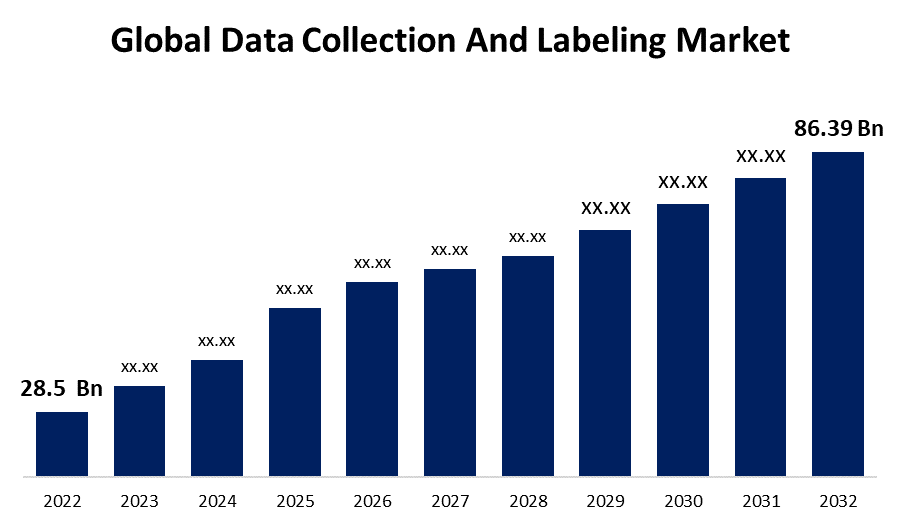Global Flexible Electronics Market Size, Share, and COVID-19 Impact Analysis, By Component (Flexible Display, Flexible Battery, Flexible Sensor, Flexible Memory, Flexible Photovoltaics, Others), By End-users (Healthcare, Automotive, Industrial, Energy & Power, Consumer Electronics, Defense & Aerospace, Others), and By Region (North America, Europe, Asia-Pacific, Latin America, Middle East, and Africa), Analysis and Forecast 2022 - 2032.
Industry: Semiconductors & ElectronicsGlobal Flexible Electronics Market Size Insights Forecasts to 2032
- The Global Flexible Electronics Market Size was valued at USD 28.5 Billion in 2022.
- The Market Size is Growing at a CAGR of 11.7% from 2022 to 2032
- The Worldwide Flexible Electronics Market Size is expected to reach USD 86.39 Billion by 2032
- North America is expected to Grow the fastest during the forecast period

Get more details on this report -
The Global Flexible Electronics Market Size is expected to reach USD 86.39 Billion by 2032, at a CAGR of 11.7% during the forecast period 2022 to 2032.
Flexible electronics, often known as flex circuits, is a technique that allows electronic circuits to be assembled by mounting electronic devices on flexible plastic substrates such as polyimide, PEEK, or translucent conductive polyester film. Flex circuits are frequently utilized as connectors in a variety of applications where the lifespan of rigid circuit boards or hand wiring is limited due to flexibility, space savings, or manufacturing limitations. The majority of flexible circuits are passive wiring structures designed to interconnect electronic elements such as integrated circuits, resistors, capacitors, and the like; however, some are utilized solely to make interconnections between other electronic assemblies, either through direct contact or via connectors. With regard to the numerous advantages they offer, flexible electronics are becoming increasingly popular. Flex circuits are expected to be employed for a range of applications as more organizations discover their potential for increased customizability, affordability, and portability. Flexible circuits are used in consumer electronics devices such as cameras, personal entertainment devices, calculators, and exercise monitors. Flexible circuits are used in industrial and medical equipment when several interconnections must be formed in a small amount of space. Furthermore, the rise in printed electronics promotes market expansion, generating appealing potential for a variety of applications.
Global Flexible Electronics Market Report Coverage
| Report Coverage | Details |
|---|---|
| Base Year: | 2022 |
| Market Size in 2022: | USD 28.5 Billion |
| Forecast Period: | 2022-2032 |
| Forecast Period CAGR 2022-2032 : | 11.7% |
| 2032 Value Projection: | USD 86.39 Billion |
| Historical Data for: | 2020-2021 |
| No. of Pages: | 200 |
| Tables, Charts & Figures: | 110 |
| Segments covered: | By Component, By End-users, By Region and COVID-19 Impact |
| Companies covered:: | Samsung Group, LG Corp., Panasonic Corporation, The 3M Company, Konica Minolta Inc., First Solar, Inc., E Ink Holdings, Blue Spark Technologies, Inc., BrightVolt Technologies, General Electric, ITN Energy Systems Inc., OLEDWorks LLC, Multi-Fineline Electronix, Inc., Pragmatic Semiconductor Limited, and other key vendors. |
| Pitfalls & Challenges: | COVID-19 Empact, Challenge, Future, Growth & Analysis. |
Get more details on this report -
Driving Factors
The Growing popularity of flexible electronics, such as flexible batteries and displays in the electronics industry, and the apparent boost in consumer acceptance of computing devices and smartphone products are two key factors anticipated that will propel the projected expansion of the worldwide flexible electronics market. Flexible electronics have become prevalent as a result of their outstanding adaptability due to unique physical qualities such as flexibility and stretchability. Additionally, as portable electronic device technology such as smart glasses, smart watches, and smart bands emerge, so does the market for wearable electronic items. Furthermore, neuromorphic devices are beginning to overcome the restrictions of traditional Si-based devices for energy-efficient computing and big-data analysis. These materials could be used in high-performance memory devices as well as advanced memory devices like flexible and neuromorphic devices.
It is expected that the flexible electronics industry will transform displays, lighting technologies, grid connectivity, power integration, health monitoring systems, and other applications. It is also crucial in the emergence of smart cities that have integrated infrastructure. Medical gadgets, surgical methods, and diagnostic instruments are rapidly improving in the global healthcare business. In addition, customer demand for minimal surgical/diagnostic procedures is Growing, necessitating the use of medical devices/equipment with superior electrical characteristics, flexibility, and stretchability. Additionally, the market is likely to develop throughout the course of the forecast. Due to the rising popularity of Internet of Things (IoT) devices and increased government concern for flexible electronics. Increasing technological improvements are expected to present opportunities for expansion in the global flexible electronics market throughout the forecast period. Several companies have been spending significantly on research and development initiatives to help their offerings develop and Grow.
Restraining Factors
However, cost constraints are projected to hamper the expansion of the flexible electronics market. The buying price of devices featuring flexible electronics may be higher than the cost of devices fitted with standard electronic components. In contrast, the introduction of flexible electronics into new applications is expected to provide lucrative potential to the global flexible electronics market.
Market Segmentation
By Component Insights
The flexible display segment is dominating the market with the largest revenue share over the forecast period.
On the basis of component, the global flexible electronics market is segmented into the flexible display, flexible battery, flexible sensor, flexible memory, flexible photovoltaics, and others. Among these, the flexible display segment is dominating the market with the largest revenue share of 41.7% over the forecast period. The Growing demand from consumers for innovative displays that can stretch, move, or provide a degree of flexibility is expected to propel the development of the flexible display market. Furthermore, because they use less electricity, flexible screens are more energy efficient than typical displays. Large-screen devices, such as televisions and digital signage solutions, are also using flexible displays.
By End-users Insights
The consumer electronics segment accounted for the largest revenue share of more than 48.2% over the forecast period.
On the basis of end-users, the global flexible electronics market is segmented into healthcare, automotive, industrial, energy & power, consumer electronics, defense & aerospace, and others. Among these, the consumer electronics segment is dominating the market with the largest revenue share of 48.2% over the forecast period. This segment's expansion can be ascribed to the widespread use of flexible displays in consumer electronic products such as smartphones, wearables, televisions, and so on. Similarly, there is an increase in demand for lightweight and long-lasting battery-powered items such as laptops, smartphones, and smartwatches. Furthermore, manufacturers' strategy is to integrate flexible batteries, screens, and sensors in order to create more high-quality goods. As a result, the popularity of smart components is expected to assist the target segment's Growth.
Regional Insights
Asia Pacific dominates the market with the largest market share over the forecast period.

Get more details on this report -
Asia Pacific is dominating the market with more than 35.6% market share over the forecast period. The enormous production capabilities of countries such as China and South Korea accelerated market penetration rates, and the standing of several Asian countries at the center of electronics creativity and inventiveness, particularly in segments such as smartphones and wearable devices, are the most significant factors extending this dominance. The Asia Pacific region's increasing middle class has an insatiable desire for the latest technologies, fueling demand for products using flexible electronics. Furthermore, the region's massive consumer electronics market, as well as the appeal of innovative goods such as foldable cellphones, has fueled the widespread utilization of flexible electronics.
North America, on the contrary, is expected to Grow the fastest during the forecast period. North America has long been a leader in new technology creation and adoption, and the flexible electronics area is certainly no different. The presence of global technology behemoths, extensive R&D infrastructure, and high consumer demand have fueled the region's Growth in the flexible electronics market. Furthermore, the rising need for flexible displays and wearable electronics has accelerated the mainstreaming of flexible electronics in North America.
The Europe market is expected to register a substantial CAGR Growth rate during the forecast period. With an increased focus on research, efficiency, and innovation, Europe is a key player in the worldwide flexible electronics industry. Furthermore, Europe's drive for green and sustainable energy solutions recognizes the potential for flexible electronics, particularly in sectors such as flexible solar panels.
List of Key Market Players
- Samsung Group
- LG Corp.
- Panasonic Corporation
- The 3M Company
- Konica Minolta Inc.
- First Solar, Inc.
- E Ink Holdings
- Blue Spark Technologies, Inc.
- BrightVolt Technologies
- General Electric
- ITN Energy Systems Inc.
- OLEDWorks LLC
- Multi-Fineline Electronix, Inc.
- Pragmatic Semiconductor Limited
Key Market Developments
- On June 2023, FLEX PLUS, a flexible battery solution, was introduced by Forsee Power, a battery manufacturer. The battery system is designed for electric heavy vehicles like trucks, buses, and off-road vehicles. The battery solution will enable thermal hybrid applications to be used or charged in electric vehicles.
Market Segment
This study forecasts revenue at global, regional, and country levels from 2020 to 2032. Spherical Insights has segmented the Global Flexible Electronics Market based on the below-mentioned segments:
Flexible Electronics Market, Component Analysis
- Flexible Display
- OLED
- E-paper
- LCD
- Others
- Flexible Battery
- Thin-Film Batteries
- Curved Batteries
- Printed Batteries
- Others
- Flexible Sensor
- Bio Sensors
- CMOS Hybrid Sensors
- Photo Detectors
- Piezo Resistive
- Others
- Flexible Memory
- Flexible Photovoltaics
- Others
Flexible Electronics Market, End-users Analysis
- Healthcare
- Automotive
- Industrial
- Energy & Power
- Consumer Electronics
- Defense & Aerospace
- Others
Flexible Electronics Market, Regional Analysis
- North America
- US
- Canada
- Mexico
- Europe
- Germany
- Uk
- France
- Italy
- Spain
- Russia
- Rest of Europe
- Asia Pacific
- China
- Japan
- India
- South Korea
- Australia
- Rest of Asia Pacific
- South America
- Brazil
- Argentina
- Rest of South America
- Middle East & Africa
- UAE
- Saudi Arabia
- Qatar
- South Africa
- Rest of Middle East & Africa
Need help to buy this report?